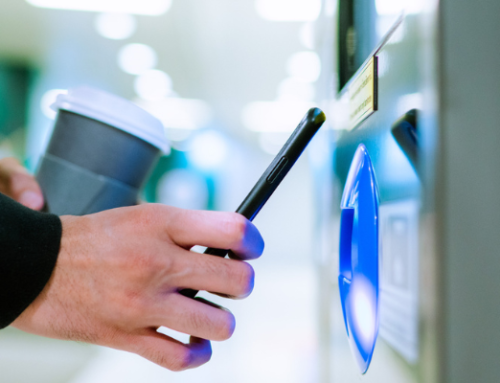The good news at this point in the coronavirus news cycle is that we’re becoming accustomed to rapid change and a new normal of business operations, or lack thereof. As the saying goes, the devil is in the details. Navigating the different components of the CARES Act, existing SBA disaster assistance, and other aspects of operating a club in an era of mandated social distancing can easily become confusing and overwhelming.
These are some common questions that Club management and members have asked us recently. Whether you’re figuring out loan funding, tax credits, the specifics of staying open, or something else entirely, consult these FAQs first to see if you can find an answer here. Then give us a call if you need further information.
The CARES Act and SBA Loan Assistance
Should my Club apply for an Economic Injury Disaster Loan (EIDL)?
The SBA is no longer accepting new applications for EIDLs except for agricultural producers. The lapse in funding may be restored in a CARES Act Part 3 type of legislation, but there are no guarantees.
That being said, it’s still worth it to talk to your lender and get your application ready to go and keep the conversation with your PBMares representative open. In the event new funding becomes available, you want to apply as quickly as possible. These funds are first-come, first-serve.
What information is required for an EIDL application?
At a minimum, be prepared to submit your most recent tax return, IRS Form 4506-T, a financial statement, schedule of liabilities, and other information as requested. We’ve also seen articles of incorporation, cash flow projections, and other financial and business documentation required for different applications.
The multitude of documentation is why you should be using the time now to prepare if applications open up again this summer.
What is the Employee Retention Credit and how does it work?
Most clubs are doing a combination of employee furloughs and retaining essential personnel. Clubs are eligible for the Employee Retention Credit if they’ve experienced:
- the full or partial suspension of the operation of their trade or business during any calendar quarter because of governmental orders limiting commerce, travel, or group meetings due to COVID-19, or
- a significant decline in gross receipts.
For Clubs that qualify based on either of the above, the Employee Retention Credit is an incentive to bring them back sooner or otherwise keep staff on the payroll.
The Employee Retention Credit is applied on a quarterly basis when you file an estimated 941 employment taxes. It’s calculated at 50% of qualified wages up to $10,000, with a max credit of $5,000 per employee). The eligible period runs from March 12, 2020, through December 31, 2020. Depending on your 2019 annual average full-time employee count the credit is calculated for all employees you are paying (under 100 full-time employees) or for employees you are continuing to pay that are not working (over 100 full-time employees).
There are no known restrictions on calculating credits for employees making over certain salaries, and no known restrictions on exempt versus non-exempt employees.
My March payroll period ended at the beginning of April. Do I include that on Q1 or Q2 to claim the Employee Retention Credit?
For March payroll periods ending by April 3, 2020, use the second quarter.
What if the Employee Retention Credit results in a higher number than my quarterly taxes owed?
In some cases, the quarterly estimated tax payment will be lower than the amount of the Employee Retention Credit for which you qualify. In that case, you may obtain a refund or advance payment using IRS Form 7200.
Since the Employee Retention Credit is calculated by quarter, you may qualify for a refund in quarter two but not quarter three. The purpose is cash flow.
Should my Club take the Employee Retention Credit or let my employee(s) continue to receive unemployment compensation?
Before we answer, keep in mind that there are emotional ramifications to labor decisions. A furloughed employee has been deemed non-essential and there is usually an emotional reaction to being laid off. Bear that in mind when making decisions, as you know your club and your employees best.
From a purely financial point of view, some hourly or part-time employees will likely fare better receiving unemployment right now. This is partly because of the additional unemployment benefits that the CARES Act authorized. Whatever you decide, be honest, transparent, and empathetic with your employees.
What is the payroll tax deferral all about?
Under the CARES Act, businesses may defer the employer portion of social security tax incurred between March 27, 2020 and December 31, 2020. The amount due and not paid in that period is due at 50% by December 21, 2021 and 50% by December 31, 2022. Again, this is designed to increase cash flow.
What are the changes to 401(k) plans in the CARES Act?
Under the CARES Act, there are several temporary changes to employer-sponsored plan distributions and taxable events.
One: Participants qualify for a coronavirus-related distribution if they or their spouse are diagnosed with COVID-19, or the participant experiences adverse financial consequences due to being quarantined, laid off, furloughed, or hours/salary reduced, among other events. These distributions are NOT subject to a 10% early withdrawal fee but are taxable if not repaid within three years. Coronavirus-related distributions are limited to $100,000 in 2020.
Two: the plan can elect an increased loan limit for coronavirus-related distributions. Loan limits have been increased to $100,000 or 100% of the participant’s vested account balance. This only applies to loans made between March 27, 2020 and September 23, 2020. Loan repayments can be suspended for a year due to the employee’s leave of absence. Existing plan participant loan payments will continue to accrue interest and loan terms may be extended without violating the 5-year maximum term period.
Three: Required minimum distributions for the 2020 plan year are waived. This does not apply to defined benefit plans. If the RMD has already been received during 2020, then the participant or beneficiary may roll it over or roll it back into the Plan or their IRA and defer paying taxes. The expectation is that the IRS will extend the 60-day rollover period for IRAs.
Four: If Plan Sponsors elect to offer the provisions for Coronavirus-related distribution type or increase loan provisions to their participants, the plan will need to be amended by December 31, 2022, for calendar year plans. Plan loans can be offered now even if the Plan does not currently allow for loans. Fiscal year-end plans have until the last day of the first plan year that begins on or after January 1, 2022 to amend the Plan.
Operations and Food Service
Should I separately track my to-go food?
It is not required; however, tracking to-go food separately is a good idea. Some clubs are doing this through use of one specific POS terminal, such as the snack bar POS terminal. Other clubs track to-go food on a typical day, but will not include one-off events, like offering a more robust Easter dinner take-out option, in this new separate category.
Is to-go food considered to be non-traditional income?
Yes. The IRS has not communicated a change to de minimis non-traditional regulations. However, arguments exist that this amount can be treated as member income during this time period as this is in many cases the only way to provide services to members.
I’m worried my club members will expect these kinds of services post-pandemic. What should I do?
If your club doesn’t intend to continue offering special to-go food options or carryout alcohol sales when it is back in normal operations, it’s important to communicate the temporary nature of this set-up to your members. Most people understand that clubs and restaurants are adjusting their normal operations right now but may not understand what changes temporary and what changes will continue to be in place when social distancing rules are lifted. Decide what this looks like for your club and communicate accordingly. The IRS will likely be much less willing to overlook the nontraditional aspect of this function after the clubs are fully open.
Finances and the Future
How should I handle club members who want to donate money to support staff?
This can be done; however, the member will not receive a tax deduction nor can the amount be designated as salary support. We recommend setting up a separate fund or 501(c) organization where donations can be deposited and distributed accordingly. Talk to a PBMares representative about the nuances of this arrangement. There is also an option to create an “Employee Hardship and Disaster Relief Fund Program.”
How do I know which assumptions to use in my projections?
It makes sense to do multiple budgets for multiple scenarios. Find your breakeven point where you can continue to operate, then do various projections at different revenue levels. Then, do a cash flow forecast up to 3, 6, or 12 months into the future. Some clubs are doing up to 8 scenarios with different variables in terms of when we come back, what comes back, and how much payroll comes back. It’s a good idea to factor in a phased-in approach, with private even revenue coming into play much later.
According to Club Benchmarking, allow for an impact of 4-6% per month of closure.
Is there an extension of the deadline for 501(c)7 clubs?
Yes, the current filing requirement for year-end tax-exempt Clubs has been extended to July 15, 2020. The extension of deadlines from its original date of May 15, 2020, to July 15, 2020, is automatic – no extension form is required. Clubs needing additional extension will be permitted to extend only to original statutory extension dates – November 15, for a year-end Club.





